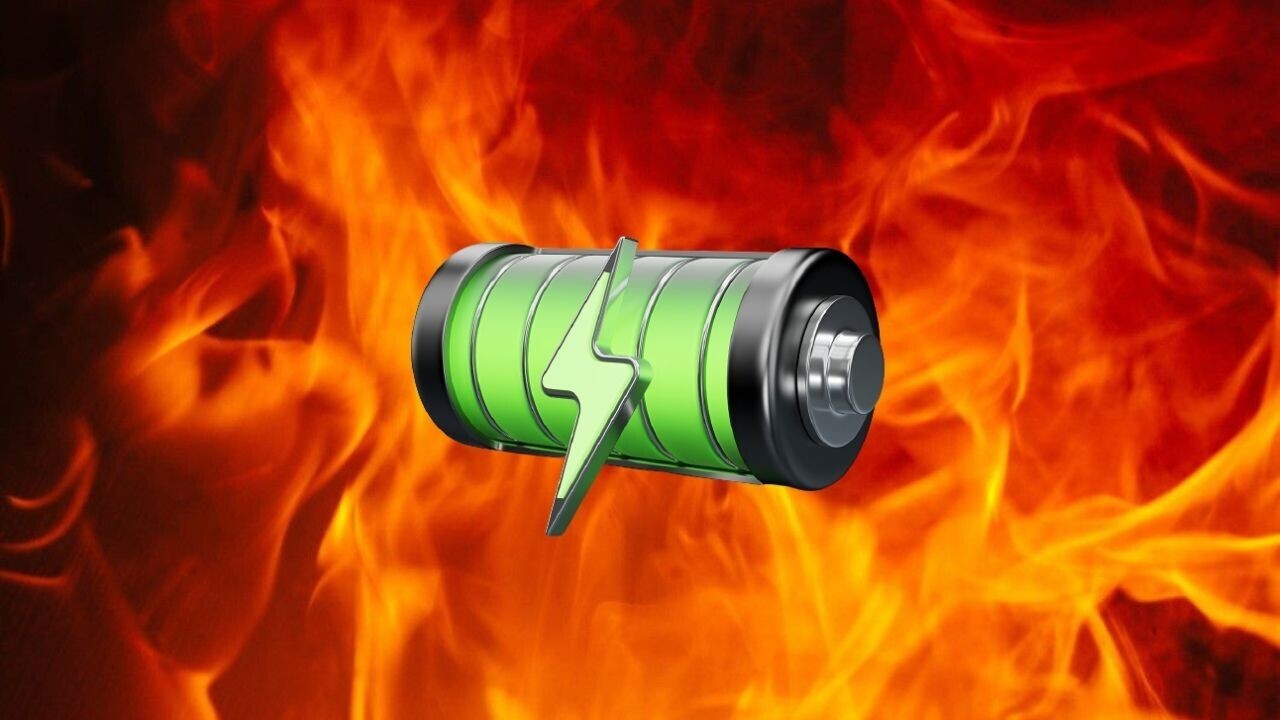
While EVs are less likely to catch fire than cars with internal combustion engines, when they do, it’s worse. Much worse.
The culprit? Their lithium-ion batteries.
To better understand why lithium-ion batteries can sometimes be hazardous, let’s first refresh how they work.
A li-ion battery comprises of four key elements: a positive electrode (the cathode), a negative electrode (the anode), an electrolyte, and a separator.

The electrodes store the lithium ions, the electrolyte carries them between the electrodes, and the separator keeps the cathode from coming in contact with the anode.
Which part of the battery is flammable?
The batteries’ flammability has to do with their liquid electrolytes.
In general, electrolytes in use today involve dissolving a lithium salt in a liquid material composed primarily of linear and cyclic chain carbonates. Basically, molecules that involve a carbon atom attached to three oxygen atoms. These liquids are typically flammable, and can be volatile and unstable when exposed to high temperatures.
What’s causing the fires?
As Professor Paul Christensen from the University of Newcastle explained to Air Quality News, “if the battery is exposed to excessive heat, or there is a penetration in the battery case, then you get an internal short circuit.”
Simply put, this short circuit causes excessive heat, which in turn causes a chemical reaction. That generates more heat, making the chemical reaction develop even faster, which again results in more heat — a vicious circle.
This process is called “thermal runaway” and can lead to a domino effect. Namely, the heat generated by a failed cell can move to the next cell, making it thermally unstable as well. This chain reaction has the potential to destroy the entire pack in a matter of seconds and even cause explosions.

What can cause a thermal runaway?
- Manufacturing defects or design flaws
- Software issues
- Physical damage during an accident
- Extreme weather conditions
- Use of poorly insulated chargers
Why do EV fires present a unique challenge?
There are four main reasons why EV fires are demanding to deal with:
- Due to their intensity, they require larger amounts of water to be put out. According to the Confederation of Fire Protection Associations of Europe, firefighters need more than 60,000 liters of water and a flow rate of 1100 liters per minute to tackle an EV fire.
- Firefighters also need to prevent the water from flowing into drains because of the toxins it picks up from the burning batteries.
- During an EV fire, over 100 chemicals are generated from the battery, including toxic gases such as carbon monoxide and hydrogen cyanide, which are fatal to humans.
- Electric vehicle fires can reignite minutes, hours, or even days after the initial event.
What can you do to avoid it?
While the burden falls mostly on manufacturers, there are a few things you can do to enhance your EV’s safety. For instance, you should avoid overcharging. You should also regularly get your vehicle’s batteries checked and repaired from the automaker’s authorized service centers.
And it goes without saying that if your car catches fire, you should immediately evacuate and not attempt to extinguish the fire yourself.
HT – Ion Energy, ThoughtCo, Stuff
Get the TNW newsletter
Get the most important tech news in your inbox each week.





